- What year was Martin Luther King Day first observed as a federal holiday?
 Martin Luther King, Jr., was born in Atlanta in 1929, the son of a Baptist minister. He received a doctorate degree in theology and in 1955 organized the first major protest of the civil rights movement: the successful Montgomery Bus Boycott. In 1963, he led his massive March on Washington, in which he delivered his famous “I Have a Dream” address.
Martin Luther King, Jr., was born in Atlanta in 1929, the son of a Baptist minister. He received a doctorate degree in theology and in 1955 organized the first major protest of the civil rights movement: the successful Montgomery Bus Boycott. In 1963, he led his massive March on Washington, in which he delivered his famous “I Have a Dream” address.
King was the first modern private citizen to be honored with a federal holiday. The fight to make the Martin Luther King Jr. birthday a holiday took 32 years, a lot of campaigning, and guest appearances including Stevie Wonder, Ted Kennedy, and the National Football League.
King’s birthday was finally approved as a federal holiday in 1983. The first federal holiday was celebrated in 1986 but it took years for observance to filter through to every state. Several Southern states promptly combined Martin Luther, King, Jr. Day with holidays that uplifted Confederate leader Robert E. Lee, who was born on January 19.
Arizona initially observed the holiday, then rescinded it, leading to a years-long scuffle over whether to celebrate King that ended in multiple public referenda, major boycotts of the state, and a final voter registration push that helped propel a final referendum toward success in 1992. It wasn’t until 2000 that every state in the Union finally observed Martin Luther King, Jr. Day.
- Dudley Randall, dubbed by Black Enterprise magazine in 1978 as "The father of the black poetry movement", originally created this publishing company to publish his own poetry.
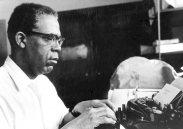 Dudley Randall, (1914 - 2000), created the Broadside Press in 1965 in Detroit, Michigan. The press was run out of his home, with limited funds, but managed to publish the major African-American poetry of the time. Randall founded Broadside Press to publish his own poetry but soon expanded to include other poets with focus on producing inexpensive but quality broadsides and books. Randall's first self-published work, a poem titled "The Ballad of Birmingham," was based on the bombing of Dr. Martin Luther King, Jr.'s Birmingham church 1963, which killed four girls. The majority of Randall's works were based on significant historical events and people that impacted the life of African American people. What made the Broadside Press significant was that it gave African American poets and writers the opportunity to have their works published during a time when major publishing houses did not take these works seriously. The works of Sonia Sanchez, Nikki Giovanni, Gwendolyn Brooks and many others that were mainly Detroit natives had their works published by Randall's Broadside Press.
Dudley Randall, (1914 - 2000), created the Broadside Press in 1965 in Detroit, Michigan. The press was run out of his home, with limited funds, but managed to publish the major African-American poetry of the time. Randall founded Broadside Press to publish his own poetry but soon expanded to include other poets with focus on producing inexpensive but quality broadsides and books. Randall's first self-published work, a poem titled "The Ballad of Birmingham," was based on the bombing of Dr. Martin Luther King, Jr.'s Birmingham church 1963, which killed four girls. The majority of Randall's works were based on significant historical events and people that impacted the life of African American people. What made the Broadside Press significant was that it gave African American poets and writers the opportunity to have their works published during a time when major publishing houses did not take these works seriously. The works of Sonia Sanchez, Nikki Giovanni, Gwendolyn Brooks and many others that were mainly Detroit natives had their works published by Randall's Broadside Press.
http://www.broadsidelotuspress.com/dudley_randall_and_broadside.htm
- Who was the first African American to earn an international pilot's license.
 Emory Conrad Malick (1881 – 1958) grew up in central Pennsylvania. As a young man, Malick built and flew gliders. In 1911, Mr. Malick became the first aviator to fly over central Pennsylvania, flying his homemade "aeroplane" over both Northumberland and Snyder Counties.
Emory Conrad Malick (1881 – 1958) grew up in central Pennsylvania. As a young man, Malick built and flew gliders. In 1911, Mr. Malick became the first aviator to fly over central Pennsylvania, flying his homemade "aeroplane" over both Northumberland and Snyder Counties.
Malick was the first licensed Black aviator, earning his International Pilot’s License (Federation Aeronautique Internationale, or F.A.I., license), #105, on March 20, 1912. After earning his pilot’s license Malick obtained, assembled, and improved upon a Curtiss “pusher” biplane that in 1914 he flew over Selinsgrove, Pennsylvania.
In March 1928 at a Camden, New Jersey airshow, Malick took two passengers for a quick hop in his Waco three seater. They were barely aloft when the engine died. Malick banked to the left to avoid spectators; unfortunately, the wind caught the aircraft, and the Waco crashed. “The entire plane seemed to crumple as if it had been smitten by the fist of a giant,” reported the Sunbury (Pennsylvania) Daily Item. The two passengers were injured. Later that year, Malick crashed again the cause isn’t known this time injuring himself and killing his passenger. He never flew again.
Although he stopped flying after two crashes, one injuring himself and killing his passenger, Malick remained interested in aviation. In December 1958, when he was 77 years old, Malick died after slipping and falling on an icy sidewalk in Philadelphia. With no identification on him, his body was unclaimed in the morgue for more than a month, until his identity could be established.
- This true renaissance man was a world renowned performer, political activist, 2-time All American college football player, NFL player, and received a law degree from Columbia University.
 Paul Bustill Robeson (1898 -1976) was born in 1898, the son of a runaway slave, William Drew Robeson. He grew up in Princeton, New Jersey, where he gained fame as one of the greatest football players ever, earning back-to-back first-team All-America honors in 1917 and 1918 at Rutgers University.
Paul Bustill Robeson (1898 -1976) was born in 1898, the son of a runaway slave, William Drew Robeson. He grew up in Princeton, New Jersey, where he gained fame as one of the greatest football players ever, earning back-to-back first-team All-America honors in 1917 and 1918 at Rutgers University.
Upon graduating from Rutgers, he would attend law school at Columbia University in New York City. To pay for law school he played professional football in the newly formed NFL in 1920 - 22. Robeson played three seasons of professional football in Hammond, Indiana, Akron, Ohio, and Milwaukee, Wisconsin.
He obtained a law degree in 1923, but, because of the lack of opportunity for blacks in the legal profession, he drifted to the stage, making a London debut in 1922. He joined the Provincetown Players, a New York theatre group that included playwright Eugene O’Neill, and appeared in O’Neill’s play All God’s Chillun Got Wings in 1924. His subsequent appearance in the title role of O’Neill’s The Emperor Jones caused a sensation in New York City (1924) and London (1925).
In addition to his other talents, Robeson had a superb bass-baritone singing voice. In 1925 he gave his first vocal recital of African American spirituals in Greenwich Village, New York City, and he became world famous as Joe in the musical play Show Boat with his version of “Ol’ Man River.” His characterization of the title role in Othello in London (1930) won high praise, as did the Broadway production (1943), which set an all-time record run for a Shakespearean play on Broadway.
Increasing political awareness impelled Robeson to visit the Soviet Union in 1934, and from that year he became increasingly identified with strong left-wing commitments, while continuing his success in concerts, recordings, and theatre. In 1950 the U.S. State Department withdrew his passport because he refused to sign an affidavit disclaiming membership in the Communist Party. In the following years he was virtually ostracized for his political views, although in 1958 the Supreme Court overturned the affidavit ruling. Robeson then left the United States to live in Europe and travel in countries of the Soviet bloc, but he returned to the United States in 1963 because of ill health. He retired to Philadelphia and lived in self-imposed seclusion until his death in 1976.
Robeson appeared in a number of films, including Sanders of the River (1935), Show Boat (1936), Song of Freedom (1936), and The Proud Valley (1940). His autobiography, Here I Stand, was published in 1958.
- Lonnie Johnson, who was the first African American engineer to be inducted into Alabama’s Engineering Hall of Fame, invented what popular toy?
 Lonnie was born in Mobile, Alabama in 1949. Going to school during segregation, Lonnie attended the all-black Williamson High School in Mobile where he was nicknamed “The Professor” by his friends. Lonnie earned a BS degree in mechanical engineering in 1973 and an MS degree in nuclear engineering in 1975 from Tuskegee University in Alabama.
Lonnie was born in Mobile, Alabama in 1949. Going to school during segregation, Lonnie attended the all-black Williamson High School in Mobile where he was nicknamed “The Professor” by his friends. Lonnie earned a BS degree in mechanical engineering in 1973 and an MS degree in nuclear engineering in 1975 from Tuskegee University in Alabama.
After graduate school he joined the US Air Force and served as acting chief of the Space Nuclear Power Safety Section. In 1979 he accepted a position at NASA’s Jet Propulsion Laboratory (JPL), where he earned multiple NASA awards for his spacecraft system designs. Despite this impressive resume, Lonnie is most famous for the results of inventive pursuits during his spare time.
In 1982 he was working at home on an environmentally-friendly heat pump that used water instead of Freon. The resulting powerful stream of water that blasted out when he pulled the nozzle’s lever inspired him to tinker with it as a potential toy. By 1989, he licensed his Super Soaker water gun to Larami Corporation, which was purchased by Hasbro six years later. By 2016 that sales figures for the super soaker had reached nearly $1 billion.
The proceeds from licensing his top-selling toy provided the capital to start Johnson Research & Development Co., Inc., in Atlanta, which later incubated two spin-off companies—Excellatron Solid State to produce rechargeable lithium ion batteries and Johnson Electro-Mechanical Systems that focuses on the Johnson Thermodynamic Energy Converter, or JTEC. Lonnie was inducted into Alabama’s Engineering Hall of Fame in 2011—the first African American engineer to be so honored.
- This mathematician was handpicked by the president of West Virginia State to be one of three black graduate students to integrate West Virginia University in 1940.
 Katherine Johnson (1918 – 2020) was born in White Sulphur Springs, West Virginia, the youngest of four children of Joshua and Joylette (Lowe) Coleman. Her mother was a schoolteacher, her father a farmer. Katherine entered high school at 10 and graduated at 14. The next year she entered West Virginia State where she made quick work of the school’s math curriculum. She graduated with highest honors in 1937 and took a job teaching at a black public school in Virginia.
Katherine Johnson (1918 – 2020) was born in White Sulphur Springs, West Virginia, the youngest of four children of Joshua and Joylette (Lowe) Coleman. Her mother was a schoolteacher, her father a farmer. Katherine entered high school at 10 and graduated at 14. The next year she entered West Virginia State where she made quick work of the school’s math curriculum. She graduated with highest honors in 1937 and took a job teaching at a black public school in Virginia.
When West Virginia decided to quietly integrate its graduate schools in 1939, West Virginia State’s president, Dr. John W. Davis, selected her and two men to be the first black students offered spots at the state’s flagship school, West Virginia University.
In 1952, Katherine heard that Langley was hiring black women as mathematicians. At NASA, Johnson was a member of the Space Task Group. In 1960 she coauthored a paper with one of the group’s engineers about calculations for placing a spacecraft into orbit. It was the first time a woman in her division received credit as an author of a research report. Johnson authored or coauthored 26 research reports during her career.
In 1961 Johnson calculated the path for Freedom 7, the spacecraft that put the first U.S astronaut in space, Alan B. Shepard, Jr. The following year, at the request of John Glenn, Johnson verified that the electronic computer had planned his flight correctly. Johnson was also part of the team that calculated where and when to launch the rocket for the Apollo 11 mission of 1969, which sent the first three men to the Moon. Johnson later worked on the space shuttle program.
She retired in 1986, after 33 years at Langley. In 2015, at age 97, Johnson added another extraordinary achievement to her long list: President Barack Obama awarded her the Presidential Medal of Freedom, America’s highest civilian honor. Johnson died Feb. 24, 2020, at age 101. NASA Administrator Jim Bridenstine announced her death and promised that her legacy would be remembered.
https://www.britannica.com/biography/Katherine-Johnson-mathematician
- This businessman was the first African American to build a one billion dollar company.
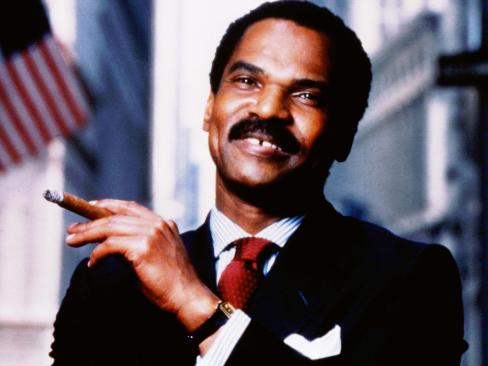 Reginald F. Lewis was born December 7, 1942 in Baltimore, Md. He excelled in academics and sports in high school. Entering Virginia State University in 1961 on an athletic scholarship, Lewis majored in economics. In his final year, Harvard Law School began introducing Black students to legal studies via a summer program. Lewis was selected for the program, and was invited by Harvard to attend its prestigious law school.
Reginald F. Lewis was born December 7, 1942 in Baltimore, Md. He excelled in academics and sports in high school. Entering Virginia State University in 1961 on an athletic scholarship, Lewis majored in economics. In his final year, Harvard Law School began introducing Black students to legal studies via a summer program. Lewis was selected for the program, and was invited by Harvard to attend its prestigious law school.
With a focus on securities law, Lewis established the first African-American law firm on Wall Street, helping many minority businesses obtain much-needed startup capital. In 1983, he created the TLC Group, a venture capital firm known for corporate takeovers of struggling companies and then turning them around. Lewis’ biggest coup came on August 9, 1987 when he purchased the international division of Beatrice Foods. Renaming it TLC Beatrice International, Lewis rapidly turned around the company as its chairman and CEO. In 1992, the company earned over $1.6 billion annually.
In 1993, Lewis died at the age of 50 after a long bout with brain cancer. His wife, attorney Loida Nicolas-Lewis, took over TLC Beatrice and ran it until 2000. She still serves as chairwoman and CEO of Beatrice, LLC a family-owned investment firm.
- What event sparked the founding of the National Association for the Advancement of Colored People (NAACP) on this day (February 12) in 1909?
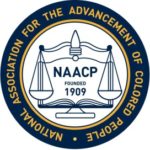 The NAACP was formed partly in response to the continuing horrific practice of lynching and the 1908 race riot in Springfield, the capital of Illinois and resting place of President Abraham Lincoln. Appalled at the violence that was committed against blacks, a group of white liberals that included Mary White Ovington and Oswald Garrison Villard, both the descendants of abolitionists, William English Walling and Dr. Henry Moscowitz issued a call for a meeting to discuss racial justice. Some 60 people, seven of whom were African American (including W. E. B. Du Bois, Ida B. Wells-Barnett and Mary Church Terrell), signed the call, which was released on the centennial of Lincoln's birth.
The NAACP was formed partly in response to the continuing horrific practice of lynching and the 1908 race riot in Springfield, the capital of Illinois and resting place of President Abraham Lincoln. Appalled at the violence that was committed against blacks, a group of white liberals that included Mary White Ovington and Oswald Garrison Villard, both the descendants of abolitionists, William English Walling and Dr. Henry Moscowitz issued a call for a meeting to discuss racial justice. Some 60 people, seven of whom were African American (including W. E. B. Du Bois, Ida B. Wells-Barnett and Mary Church Terrell), signed the call, which was released on the centennial of Lincoln's birth.
- Who was the first Black person to have a State Legislature vote to honor their memory?
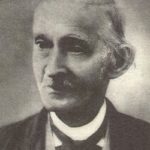 Thomy Lafon (1810-1893) was a black businessman, abolitionist, and philanthropist. He was born a free man in New Orleans, LA, the son of a Frenchman and a Haitian woman.
Thomy Lafon (1810-1893) was a black businessman, abolitionist, and philanthropist. He was born a free man in New Orleans, LA, the son of a Frenchman and a Haitian woman.
Lafon was largely self-educated. From 1868 until his death in 1893, he was a highly regarded, successful real estate broker and businessman who lived a very modest lifestyle. During his lifetime, he amassed nearly half a million dollars, unheard of for a Black man. Thomy Lafon is primarily known not for his fortune, but for his philanthropy.
He founded the Lafon Orphan Boys’ Asylum and the Home for Aged Colored Men and Women. He also donated to other charitable and religious organizations including the American Anti-Slavery Society, the Underground Railroad, the Catholic Institute for the Care of Orphans, New Orleans University, the Religious Order of the Holy Family, the Little Sisters of the Poor and the Lafon Old Folks Home.
Shortly after his death the Louisiana Legislature recognized Lafon for all the contributions he had made to New Orleans. He was the first Black person to be so honored by any State in the Union.
- Who was the first African American woman to become a U.S. postal service mail carrier?
 Mary Fields, also known as Stagecoach Mary, (1832? -1914), was born into slavery in Tennessee in about 1832. She received her freedom when the war ended and slavery was outlawed but she stayed near her original owners, the Dunn family, as she and the Dunns’ daughter had become good friends. When Dolly became a nun and moved to Toledo, Ohio, Mary joined her there. A good number of years later, Dolly, by then known as Mother Amadeus, took a position at a school for Native American girls in Cascade, Montana. In 1885, Mother Amadeus became quite ill and asked that Mary be summoned from Ohio. Mother Amadeus had pneumonia and she wanted the comfort of her childhood companion.
Mary Fields, also known as Stagecoach Mary, (1832? -1914), was born into slavery in Tennessee in about 1832. She received her freedom when the war ended and slavery was outlawed but she stayed near her original owners, the Dunn family, as she and the Dunns’ daughter had become good friends. When Dolly became a nun and moved to Toledo, Ohio, Mary joined her there. A good number of years later, Dolly, by then known as Mother Amadeus, took a position at a school for Native American girls in Cascade, Montana. In 1885, Mother Amadeus became quite ill and asked that Mary be summoned from Ohio. Mother Amadeus had pneumonia and she wanted the comfort of her childhood companion.
Fields was about 6 feet tall and weighed about 200 pounds and was capable of doing what was then regarded as men’s work as well as more-standard housekeeping chores. Despite her devotion to the nuns, she drank in saloons with men and was reputed to have a quick temper. Eventually, the bishop of the Montana diocese ordered the convent to dismiss Fields. She was said to have opened one or more eateries in Cascade, but these enterprises failed, possibly because of her alleged generosity in allowing those unable to pay to eat for free.
Shortly after this, the U.S. Postal Service was looking for someone who could handle the mail route in central Montana. Mother Amadeus, who felt terrible firing Mary, may have put a good word in for her, or maybe the government just realized Mary was highly capable of handling the job. In 1895, Mary was chosen to be the one to drive horses and wagon (and her mule Moses) on the central Montana mail route. The weather never stopped her, though if the snow was too deep, she left the team at home and delivered the mail on foot. Her personality and integrity earned her the name Stagecoach Mary.
She worked for the postal service for eight years and retired in the early 20th century. Thereafter, she operated a laundry service and also reportedly babysat children. She continued to drink in saloons, and she became a beloved figure in Cascade. The town adored her. They declared her birthday a holiday and closed the school on that day. In 1914 Stagecoach Mary died of liver failure. The whole town participated in her funeral.
- What is the name of the first black-owned brewery in the US?
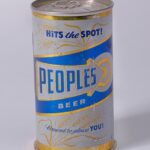 Peoples Brewing Company was one of the first black-owned breweries in the nation and the first black-owned brewery in Wisconsin, a state with a storied brewing tradition.
Peoples Brewing Company was one of the first black-owned breweries in the nation and the first black-owned brewery in Wisconsin, a state with a storied brewing tradition.
In fall 1970, Theodore “Ted” Mack put together a coalition of Black business owners and bought the Peoples Brewing Company in Oshkosh, Wisconsin. Mack used his own savings, as well as funds from the federal government’s Small Business Administration.
Mack’s desire to own a brewery stemmed from his commitment to social activism. He believed that the Black community should become producers of the goods and services that it consumed.
One of the many obstacles Mack encountered was the perception that beer was considered part of white culture. White-owned taverns refused to sell Peoples Beer and many, including those in the Black community, refused to drink it. Mack was surprised and disappointed that the Black community never really supported Peoples in the ways that he expected. He was also frustrated by the SBA’s practice of providing loans to Black businesses but not the support and technical expertise needed to make new businesses successful. Peoples closed in 1972. It had been a Black-owned brewery for just over two years.
While Peoples Brewing is most often cited as the first Black-owned brewery in the nation, some people suggest that two other breweries deserve that distinction: Colony House Brewing Company in Trenton, New Jersey, and Sunshine Brewing Company in Reading, Pennsylvania.
Today, other Black-owned breweries are following in his Mack’s footsteps. Oak Park Brewing Company in Sacramento, California is picking up where Mack left off, selling Peoples Beer, made with the original recipe.
- This entrepreneur founded Poro College and trained Madam C. J. Walker.
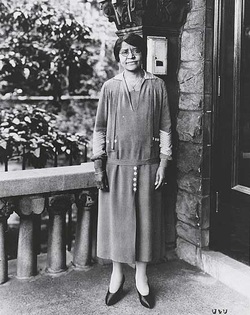 Annie Minerva Turnbo Malone (1869 - 1957) was an African-American businesswoman, educator, inventor and philanthropist. Annie was born in Metropolis, Illinois to Robert Turnbo, a poor farmer, and Isabella Cook Turnbo. In the first three decades of the 20th century, she founded and developed a large and prominent commercial and educational enterprise centered around cosmetics for African-American women. Annie launched her hair care business four years before Madam C. J. Walker. Malone is recorded as the U.S.’s first black female millionaire based on reports of $14 million in assets held in 1920 from her beauty and cosmetic enterprises, headquartered in St. Louis and Chicago.
Annie Minerva Turnbo Malone (1869 - 1957) was an African-American businesswoman, educator, inventor and philanthropist. Annie was born in Metropolis, Illinois to Robert Turnbo, a poor farmer, and Isabella Cook Turnbo. In the first three decades of the 20th century, she founded and developed a large and prominent commercial and educational enterprise centered around cosmetics for African-American women. Annie launched her hair care business four years before Madam C. J. Walker. Malone is recorded as the U.S.’s first black female millionaire based on reports of $14 million in assets held in 1920 from her beauty and cosmetic enterprises, headquartered in St. Louis and Chicago.
- This Republican was the first black person elected to the U.S. Senate.
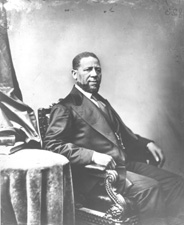 Hiram Revels of Mississippi became the first African American senator in 1870. Born in North Carolina in 1827, Revels attended Knox College in Illinois and later served as minister in the African Methodist Episcopal Church in Baltimore, Maryland. He raised two black regiments during the Civil War and fought at the battle of Vicksburg in Mississippi. The Mississippi state legislature sent him to fill a vacancy in the U.S. Senate during Reconstruction, and he quickly became an outspoken opponent of racial segregation. Although Revels' term in the Senate lasted just a year, he broke new ground for African Americans in Congress.
Hiram Revels of Mississippi became the first African American senator in 1870. Born in North Carolina in 1827, Revels attended Knox College in Illinois and later served as minister in the African Methodist Episcopal Church in Baltimore, Maryland. He raised two black regiments during the Civil War and fought at the battle of Vicksburg in Mississippi. The Mississippi state legislature sent him to fill a vacancy in the U.S. Senate during Reconstruction, and he quickly became an outspoken opponent of racial segregation. Although Revels' term in the Senate lasted just a year, he broke new ground for African Americans in Congress.
http://history.house.gov/People/Listing/R/REVELS,-Hiram-Rhodes-(R000166)/
- Who was the first black person to hold a world championship title in any sport?
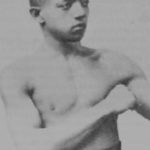 George Dixon (1870-1909), also known as “Little Chocolate,” was born on July 29, 1870 in Halifax, Nova Scotia. As a child, his family lived in Boston, Massachusetts where he became interested in fighting while assisting a photographer who took posed boxing pictures.
George Dixon (1870-1909), also known as “Little Chocolate,” was born on July 29, 1870 in Halifax, Nova Scotia. As a child, his family lived in Boston, Massachusetts where he became interested in fighting while assisting a photographer who took posed boxing pictures.
From the 1880s to the early 1900s, George Dixon fought over 163 fights in three weight classes. In 1888, he did what no Black person had to that point accomplished: he won a boxing world championship, as a bantamweight. In 1891, a little heavier, he became the world featherweight champion. He reigned for over four years, successfully defending the title three times.
George Dixon retired from boxing in 1906 with an overall record of 63 wins, 29 losses, and 48 draws. Many claim that hundreds of his fights that took place in dance halls and theatres throughout the country were never recorded. Some credit Dixon with founding the so-called “black school” of pugilism which included such greats as Joe Walcott, Joe Gans, Sam Langford, and Jack Johnson.
Dixon died penniless in 1909 at the age of 38. He was inducted into the Boxing Hall of Fame in 1956 and the International Boxing Hall of Fame in 1990.
http://www.ibhof.com/pages/about/inductees/oldtimer/dixon.html
- Where was "Resurrection City"?
 In May 1968, just a month after Martin Luther King Jr. was assassinated, around 3,000 protesters converged in Washington, D.C., to stage a campaign that the civil rights leader had been planning. Known as the Poor People’s Campaign, or PPC, it represented new directions in both King’s thought and strategy. After Dr. King’s death, Rev. Ralph Abernathy and the other leaders of the Southern Christian Leadership Conference (SCLC) resolved to move forward with King’s vision.
In May 1968, just a month after Martin Luther King Jr. was assassinated, around 3,000 protesters converged in Washington, D.C., to stage a campaign that the civil rights leader had been planning. Known as the Poor People’s Campaign, or PPC, it represented new directions in both King’s thought and strategy. After Dr. King’s death, Rev. Ralph Abernathy and the other leaders of the Southern Christian Leadership Conference (SCLC) resolved to move forward with King’s vision.
On Friday, May 10, 1968, NPS issued the five-week permit for a “city” built along the Reflecting Pool. Construction of the plywood A-frame shelters, designed by architect John Wiebenson from the University of Maryland, began on Monday, May 13. There would eventually be almost 3,000 dwellings built in the shadow of the Lincoln Memorial, along with other community buildings such as a City Hall, medical facilities, and a dining hall.
They dubbed it “Resurrection City,” and called it home for more than 40 days. They made themselves impossible to ignore—regularly leaving the encampment and heading out to the various government agencies around Washington, D.C. to demonstrate and lobby for policy change to address the needs of the poor. As they fought side-by-side for better housing, education, food, employment, wages, and health care, they discovered that although their individual circumstances may be very different, their struggles with poverty were similar..
When King laid out his vision for the PPC, which was first suggested to him by the NAACP’s Marion Wright, he hoped the campaign would yield jobs, a higher minimum wage, and more equitable access to education. Ultimately, according to Stanford University’s King Institute, the results were more modest—such as programs supplying surplus food to 200 counties and some limited hiring pledges. King and his successor Ralph Abernathy, had hoped for more—and indeed, their work is not done. In recent years, the Poor People’s Campaign has relaunched with an agenda revised for the 21st century. It is currently being revised further, as the COVID-19 pandemic poses unique threats to the economically vulnerable.
- Toni Morrison won the Pulitzer Prize for Fiction for this book.
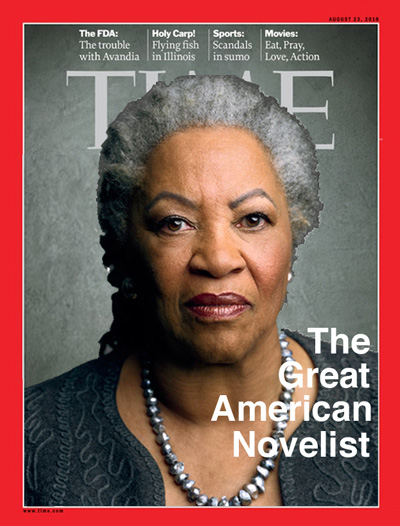 Toni Morrison (1931 - ), born Chloe Wofford in Lorain, Ohio, is a novelist, editor and professor. She attended Howard University (B.A., 1953) and Cornell University (M.A., 1955). Her novels are known for their epic themes, vivid dialogue and richly detailed black characters. Among her best known novels are The Bluest Eye, Song of Solomon and Beloved. Morrison has won nearly every book prize possible including a Pulitzer Prize for Fiction in 1988 for Beloved (1987), which explores love and the supernatural, and the Nobel Prize for Literature in 1993.
Toni Morrison (1931 - ), born Chloe Wofford in Lorain, Ohio, is a novelist, editor and professor. She attended Howard University (B.A., 1953) and Cornell University (M.A., 1955). Her novels are known for their epic themes, vivid dialogue and richly detailed black characters. Among her best known novels are The Bluest Eye, Song of Solomon and Beloved. Morrison has won nearly every book prize possible including a Pulitzer Prize for Fiction in 1988 for Beloved (1987), which explores love and the supernatural, and the Nobel Prize for Literature in 1993.
- What’s the name of the African American that invented the “razor strop” making the lives of barbers easier?
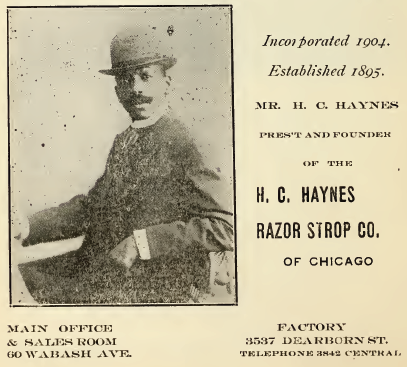 H. C. Haynes, born of slave parents in Selma, Alabama, worked as a barber's apprentice which gave him the idea for a "ready to use razor strop". Barbers were using parts at harnesses as "razor strops", which proved difficult and not always effective. Haynes first produced his 'strop" in his home and sold them to barbers. He later was able to increase production, advertise, and develop mail orders in which he supplied razors and scissors. By 1899, with the aid at his wife, the "Haynes strop" was a trade fixture. He obtained a patent, and was able to introduce and make a connection with a German manufacturer. By 1904, Haynes had imported an estimated 6,000 razor strops.
H. C. Haynes, born of slave parents in Selma, Alabama, worked as a barber's apprentice which gave him the idea for a "ready to use razor strop". Barbers were using parts at harnesses as "razor strops", which proved difficult and not always effective. Haynes first produced his 'strop" in his home and sold them to barbers. He later was able to increase production, advertise, and develop mail orders in which he supplied razors and scissors. By 1899, with the aid at his wife, the "Haynes strop" was a trade fixture. He obtained a patent, and was able to introduce and make a connection with a German manufacturer. By 1904, Haynes had imported an estimated 6,000 razor strops.
- This activist, author and academic scholar was a candidate for Vice President on the Communist Party USA ticket in 1980.
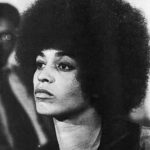 Angela Davis was born on January 26, 1944 in Birmingham, Alabama. Her father, Frank Davis, was a service station owner and her mother, Sallye Davis, was an elementary school teacher. In 1961 Davis enrolled in Brandeis University in Waltham, Massachusetts, earning her B.A. (magna cum laude) in 1965. In 1967 Davis joined the Student Nonviolent Coordinating Committee (SNCC) and then the Black Panther Party. She also continued her education, earning an M.A. from the University of California at San Diego in 1968. Davis moved further to the left in the same year when she became a member of the American Communist Party.
Angela Davis was born on January 26, 1944 in Birmingham, Alabama. Her father, Frank Davis, was a service station owner and her mother, Sallye Davis, was an elementary school teacher. In 1961 Davis enrolled in Brandeis University in Waltham, Massachusetts, earning her B.A. (magna cum laude) in 1965. In 1967 Davis joined the Student Nonviolent Coordinating Committee (SNCC) and then the Black Panther Party. She also continued her education, earning an M.A. from the University of California at San Diego in 1968. Davis moved further to the left in the same year when she became a member of the American Communist Party.
In 1970, Davis became a suspect in a failed attempt to free prisoners who were on trial that resulted in death of Superior Court Judge Harold Haley and three others including the assailant. She fled to avoid arrest and was placed on the FBI’s most wanted list and was eventually captured. During her high profile trial in 1972, Davis was acquitted on all charges. The incident generated an outcry against Davis and then California Governor Ronald Reagan campaigned to prevent her from teaching in the California State university system. Despite the governor’s objection, Davis became a lecturer in women’s and ethnic studies at San Francisco State University in 1977.
As a scholar, Davis has authored five books, including Angela Davis: An Autobiography in 1974; Women, Race, and Class in 1983; and Blues Legacies and Black Feminism: Gertrude “Ma” Rainey, Bessie Smith, and Billie Holiday in 1999. In the political arena, Davis ran unsuccessfully in 1980 and 1984 on the Communist Party ticket for vice president of the United States. Davis continues to be an activist and lecturer as Professor Emeritus of History of Consciousness and Feminist Studies at the University of California at Santa Cruz. She is also a Distinguished Visiting Professor in the Women's and Gender Studies Department at Syracuse University.
- Who was the first Black woman candidate to run for President of the United States?

Rep. Shirley Chisholm announces her candidacy for the Democratic presidential nomination, Jan. 25, 1972.
Shirley Anita St. Hill Chisholm (1924 - 2005) was the first African American woman elected to Congress. She was born in Brooklyn, New York to immigrant parents who came to America from Barbados. Chisholm graduated from Brooklyn College and the Teachers College at Columbia University. In 1968, she was elected to the United States Congress and represented New York's 12th congressional district for seven terms from 1969 to 1983. During her time in office, Chisholm served on the House Agriculture Committee where she worked to expand the food stamp program. In 1971, she was a founding member of the Congressional Black Caucus and the National Women's Political Caucus.
In the 1972 United States presidential election, she became the first Black candidate to seek a major party's nomination for President of the United States, and the first woman to run for the Democratic Party’s presidential nomination. After the unsuccessful bid for President, Chisholm continued serving in the House of Representatives. In 1977, she was elected as Secretary of the House Democratic Caucus. Chisholm retired from Congress in 1983, where she was succeeded by Major Owens. In 2015, Chisholm was posthumously awarded the Presidential Medal of Freedom.
https://www.womenshistory.org/education-resources/biographies/shirley-chisholm
- This prolific inventor holds 5 patents, the most of any African American woman in history.
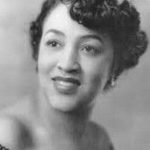 Mary Beatrice Davidson Kenner (May 17, 1912 – January 13, 2006) was an African-American inventor most noted for her development of the sanitary belt, the precursor to self-adhesive maxi pads.
Mary Beatrice Davidson Kenner (May 17, 1912 – January 13, 2006) was an African-American inventor most noted for her development of the sanitary belt, the precursor to self-adhesive maxi pads.
She was born in Monroe, North Carolina and credited her innovative mindset to her family full of inventors. Her father Sidney Nathaniel Davidson invented a pants presser, which was later patented in 1914. Her sister, Mildred Davidson, broke into the board game industry creating “Family Treedition.” While her paternal grandfather, Robert Phromeberger invented the tricolor light signal for trains.
From childhood to becoming an early adult, Kenner was consistently creating things. In 1931 she enrolled at Howard University to cultivate her creative mindset. Soon after, she was unable to afford tuition and ended up dropping out. She took on odd jobs such as babysitting before landing a position as a federal employee, but she continued tinkering in her spare time.
Between 1956 and 1987 she received five patents for her household and personal item creations. Her patents included: a carrier attachment for an invalid walker (1959), a bathroom tissue holder (1982), and a back washer mounted on a shower wall and bathtub (1987). But perhaps she is most famous for inventing a sanitary belt in the 1920’s but was not patented until 1956.
Kenner invented both the sanitary belt and the sanitary belt with moisture-proof napkin pocket. The sanitary belt gave women a better alternative for handling their periods. It was patented 30 years after she invented it, because the company who was initially interested in her creation rejected it when they learned that Kenner was African American.
https://www.vice.com/en_us/article/mb5yap/mary-beatrice-davidson-kenner-sanitary-belt
- This civil rights activist, philanthropist and entrepreneur was one of the first American women to become a self-made millionaire.
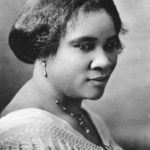 Madam C. J. Walker was born Sarah Breedlove in Delta, LA in 1867. Her parents were sharecroppers on a plantation near the Mississippi River. She lost both her parents before she turned 8 years old and went to work in the cotton fields to survive. At 14 she married Moses McWilliams and had a child, Lelia, in 1885. Moses McWilliams died in 1887 and in 1894 she married John Davis. That marriage ended in 1903 and Sarah moved to St. Louis to be with her four brothers.
Madam C. J. Walker was born Sarah Breedlove in Delta, LA in 1867. Her parents were sharecroppers on a plantation near the Mississippi River. She lost both her parents before she turned 8 years old and went to work in the cotton fields to survive. At 14 she married Moses McWilliams and had a child, Lelia, in 1885. Moses McWilliams died in 1887 and in 1894 she married John Davis. That marriage ended in 1903 and Sarah moved to St. Louis to be with her four brothers.
Sarah’s foray into the hair care industry came out of necessity - she was losing her hair. She experimented with homemade remedies and developed her own recipes. She began selling the products door-to-door and began instructing women on hair and scalp treatments.
A tight hair product market in St. Louis prompted her move in 1906 to Denver. In Denver she married Charles Joseph Walker and became “Madam” C. J. Walker. Though the marriage only lasted six years, it was the name she and her company would be known by from then on.
-
- Who was the first black person to win a Grammy?
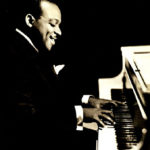 William Allen “Count” Basie (1904-1984), born in New Jersey on August 21, 1904, was among the most important bandleaders of the swing era. Both of Basie's parents were musicians; his father, Harvie Basie, played the mellophone, and his mother, Lillian (Childs) Basie, was a pianist who gave her son his earliest lessons. As a young man, he toured with vaudeville acts playing ragtime and stride piano. Basie later formed his own group, playing at the renowned Apollo in New York City, and in 1937 recorded “One O’Clock Jump” on the Decca label, which became the band’s signature song. At the first Grammy Awards ceremony, Basie won the 1958 awards for Best Performance by a Dance Band and Best Jazz Performance, Group, for his Roulette Records LP Basie.
William Allen “Count” Basie (1904-1984), born in New Jersey on August 21, 1904, was among the most important bandleaders of the swing era. Both of Basie's parents were musicians; his father, Harvie Basie, played the mellophone, and his mother, Lillian (Childs) Basie, was a pianist who gave her son his earliest lessons. As a young man, he toured with vaudeville acts playing ragtime and stride piano. Basie later formed his own group, playing at the renowned Apollo in New York City, and in 1937 recorded “One O’Clock Jump” on the Decca label, which became the band’s signature song. At the first Grammy Awards ceremony, Basie won the 1958 awards for Best Performance by a Dance Band and Best Jazz Performance, Group, for his Roulette Records LP Basie.
When this question is asked, many name Ella Fitzgerald who won the Grammy in the same year. However, Count Basie won the award earlier in the show.
- This civil rights effort is believed to be the first sit-in to protest segregation in America.

Five men were arrested at the Alexandria Library on Queen Street on Aug. 21, 1939, because they defied the exclusion of black people. (Courtesy Alexandria Black History Museum)
The Alexandria Library sit-in was among the first of what would become a key tool in the fight for civil rights. It was held on August 21, 1939 and was orchestrated by an African American lawyer named Samuel Wilbert Tucker, born in Alexandria to educated, middle-class parents in 1913. He attended Howard University for undergrad and studied law in his own time at the Library of Congress. With a personal understanding of the importance of libraries, Tucker resolved to extend the Alexandria public library access to the black community.
The library was public, and there was no law prohibiting anyone from using it regardless of race. But the library was still treated as a segregated building, and African Americans were not given cards to the library. Tucker organized the sit-in with six others — five who entered the library, knowing the service would be denied to them and a sixth to act as a lookout and alert the press when the others were threatened with arrest.
Otto Tucker, William “Buddy” Evans, Edward Gaddis, Morris Murray and Clarence “Buck” Strange entered the library and requested library cards, knowing they would be refused. After they were told they couldn’t use the library, the men picked up books from the shelves and began reading quietly. When police arrived, Evans asked what would happen if they still didn’t leave, to which the officer said they would be arrested.
The five were charged with “disorderly conduct,” as no crime had actually been committed. Samuel Tucker acted as their representation in a court case however, the judge avoided issuing a ruling, resulting in the five never being declared guilty or not guilty, but also not being forced to serve time or pay a fine.
The City of Alexandria fast-tracked the development of a Black-only library — the Robert Robinson Library. Tucker went on to work for the NAACP and argue more than 50 cases in Virginia’s Massive Resistance following Brown v. Board, appearing before the Supreme Court several times. The Alexandria library system was finally integrated to black adults in 1959 and the Robert Robinson library closed in 1962 when black children were also allowed in the city libraries.
The charges against the five men were not officially dismissed by the city until October 2019.
- Who was the first black author to win a Pulitzer Prize?
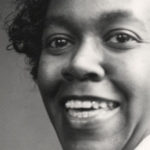 Gwendolyn Brooks (1917–2000) was a highly regarded, much-honored poet, with the distinction of being the first black author to win the Pulitzer Prize. She also was poetry consultant to the Library of Congress—the first black woman to hold that position—and poet laureate of the State of Illinois. Many of Brooks's works display a political consciousness, especially those from the 1960s and later, with several of her poems reflecting the civil rights activism of that period. Her body of work gave her, according to Dictionary of Literary Biography contributor George E. Kent, "a unique position in American letters. Not only has she combined a strong commitment to racial identity and equality with a mastery of poetic techniques, but she has also managed to bridge the gap between the academic poets of her generation in the 1940s and the young black militant writers of the 1960s."
Gwendolyn Brooks (1917–2000) was a highly regarded, much-honored poet, with the distinction of being the first black author to win the Pulitzer Prize. She also was poetry consultant to the Library of Congress—the first black woman to hold that position—and poet laureate of the State of Illinois. Many of Brooks's works display a political consciousness, especially those from the 1960s and later, with several of her poems reflecting the civil rights activism of that period. Her body of work gave her, according to Dictionary of Literary Biography contributor George E. Kent, "a unique position in American letters. Not only has she combined a strong commitment to racial identity and equality with a mastery of poetic techniques, but she has also managed to bridge the gap between the academic poets of her generation in the 1940s and the young black militant writers of the 1960s."
- Who was the first black woman to win a tennis Grand Slam tournament?
 Althea Neale Gibson (1927 - 2003) was the first Black player to win the French (1956), Wimbledon (1957–58), and U.S. Open (1957–58) singles championships. She was born on August 25, 1927, in Silver, South Carolina. At a young age, Gibson moved with her family to Harlem in New York City. After winning several tournaments hosted by the local recreation department, Gibson was introduced to the Harlem River Tennis Courts in 1941. In 1942 she won her first tournament, which was sponsored by the American Tennis Association (ATA), an organization founded by African American players. In 1947 she captured the ATA’s women’s singles championship, which she would hold for 10 consecutive years.
Althea Neale Gibson (1927 - 2003) was the first Black player to win the French (1956), Wimbledon (1957–58), and U.S. Open (1957–58) singles championships. She was born on August 25, 1927, in Silver, South Carolina. At a young age, Gibson moved with her family to Harlem in New York City. After winning several tournaments hosted by the local recreation department, Gibson was introduced to the Harlem River Tennis Courts in 1941. In 1942 she won her first tournament, which was sponsored by the American Tennis Association (ATA), an organization founded by African American players. In 1947 she captured the ATA’s women’s singles championship, which she would hold for 10 consecutive years.
Gibson's success at those ATA tournaments paved the way for her to attend Florida A&M University on a sports scholarship. She continued to play in tournaments around the country and in 1950 became the first Black tennis player to enter the national grass-court championship tournament at Forest Hills in Queens, New York. The next year she entered the Wimbledon tournament, again as the first Black player ever invited.
Until 1956 Gibson had only fair success in match tennis play, but that year she won a number of tournaments in Asia and Europe, including the French and Italian singles titles and the women’s doubles title at Wimbledon. In 1957–58 she won the Wimbledon women’s singles and doubles titles and took the U.S. women’s singles championship at Forest Hills. In 1957, Gibson was voted Female Athlete of the Year by the Associated Press, becoming the first African American to receive the honour.
Having worked her way to top rank in world amateur tennis, she turned professional following her 1958 Forest Hills win. However, there being few tournaments and prizes for women at that time, she took up professional golf in 1964 and was the first African-American member of the Ladies Professional Golf Association. Following her retirement, in 1971, Gibson was inducted into the International Tennis Hall of Fame. On September 28, 2003, Gibson died of respiratory failure in East Orange, New Jersey.
https://www.tennisfame.com/hall-of-famers/inductees/althea-gibson
- Who was the first black cover girl for a top fashion magazine?
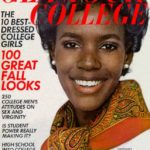 The daughter of the Ambassador to the United Nations, Katiti Kironde was a freshman at Harvard University in 1968. She applied for Glamour’s “Top 10 Best Dressed College Girls” competition and won the highest honor. The issue was not only a milestone for the then 30-year-old publication, but it was also the first time that any black women had been featured on the cover of a mainstream women’s fashion magazine in the United States. The issue that featured Kironde on the cover remains Glamour’s best-selling issue.
The daughter of the Ambassador to the United Nations, Katiti Kironde was a freshman at Harvard University in 1968. She applied for Glamour’s “Top 10 Best Dressed College Girls” competition and won the highest honor. The issue was not only a milestone for the then 30-year-old publication, but it was also the first time that any black women had been featured on the cover of a mainstream women’s fashion magazine in the United States. The issue that featured Kironde on the cover remains Glamour’s best-selling issue.
After graduating from Harvard, Kironde further established herself within the fashion industry over three decades. She later launched a clothing line that focused on designing the perfect white button-down shirt along with her husband, architect William Winder, in Boston. In 2010, Kironde taught Harvard University’s first-ever Introduction to Fashion course.
https://www.huffpost.com/entry/katiti-kironde-glamour-magazine-first-black-cover-model_n_2597505
- What was the first black newspaper?
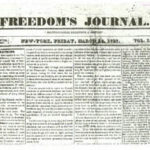 In 1827, Samuel Cornish and John B. Russwarm started the first African-American periodical, called Freedom's Journal. Freedom's Journal initiated the trend of African-American papers throughout the United States to fight for liberation and rights, demonstrate racial pride, and inform readers of events affecting the African-American community. Unfortunately, due to small readership, the paper ended its circulation in 1830. Another African American newspaper, the North Star, founded by Frederick Douglass, suffered the same fate as Freedom's Journal.
In 1827, Samuel Cornish and John B. Russwarm started the first African-American periodical, called Freedom's Journal. Freedom's Journal initiated the trend of African-American papers throughout the United States to fight for liberation and rights, demonstrate racial pride, and inform readers of events affecting the African-American community. Unfortunately, due to small readership, the paper ended its circulation in 1830. Another African American newspaper, the North Star, founded by Frederick Douglass, suffered the same fate as Freedom's Journal.
As African-Americans migrated from fields to urban centers, virtually every large city with a significant African-American population soon had African-American newspapers. Examples were the Chicago Defender, Detroit Tribune, the Pittsburgh Courier, and the (New York) Amsterdam News.
http://www.pbs.org/blackpress/news_bios/newbios/nwsppr/freedom/freedom.html
- Who was the first African American woman to earn a pilot's license?
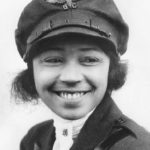 Bessie Coleman was born on January 26, 1892 in Atlanta, Texas, to George and Susan Coleman, the illiterate (unable to read and write) children of slaves. After completing school, she worked as a laundress and saved her pay until 1910 when she left for Oklahoma to attend Langston University. She left after one year when she ran out of money and later moved to Chicago, Illinois, to live with her older brother, Walter.
Bessie Coleman was born on January 26, 1892 in Atlanta, Texas, to George and Susan Coleman, the illiterate (unable to read and write) children of slaves. After completing school, she worked as a laundress and saved her pay until 1910 when she left for Oklahoma to attend Langston University. She left after one year when she ran out of money and later moved to Chicago, Illinois, to live with her older brother, Walter.
After befriending several leaders in South Side Chicago's African American community, Coleman found a sponsor in Robert Abbott, publisher of the nation's largest African American weekly, the Chicago Defender. There were no African American aviators (pilots) in the area and, when no white pilot was willing to teach her to fly, Coleman turned to Abbott, who suggested that she go to France.
Coleman left for France late in 1920. There she completed flight training at the best school in France and was awarded her Fédération Aéronautique Internationale (F.A.I.; international pilot's license) license on June 15, 1921. She traveled Europe, gaining further flying experience so that she could perform in air shows. She dazzled crowds with her stunts at air shows and refused to be slowed by racism.